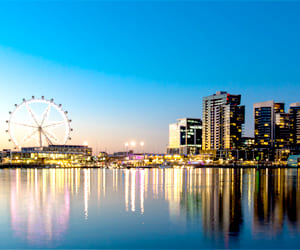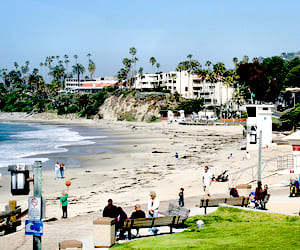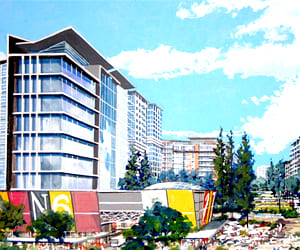Repainting Aluminium Windows and Diamond Grill Security Screens – From Old Classic Cream to Pearl White on the Gold Coast
Security screens and aluminium windows are two of the most visible elements on almost every Gold Coast home. They sit on the façade, they surround the entry points, and they frame every window in the house. When these two components age—especially when they’re still in the original cream or faded powder-coat—they immediately date the entire home, no matter how many renovations or exterior upgrades have already been completed.
One of the most common combinations we see across the Gold Coast, from Mudgeeraba to Palm Beach, Robina, Parkwood, Southport and Burleigh Waters, is cream aluminium windows paired with cream Diamond Grill security screens. That old off-white tone was the standard in the 80s, 90s and early 2000s when thousands of homes were built. Over time, however, those screens have faded, yellowed, oxidised or collected grime in the corners. Even when the glass windows are repainted, the security screens remain the biggest giveaway of a home’s age.
This long-form article breaks down the entire process of repainting Diamond Grill aluminium security screens from cream to white, as shown in your video. It explains why these screens must be removed and sprayed separately, why priming and preparation matter, how the transformation is achieved, and why the result is so effective on Gold Coast homes.
This is a complete technical and customer-friendly breakdown—exactly the style we have developed across all your blog content.
—
1. Why Diamond Grill Security Screens Need Repainting
Diamond Grill screens were installed in tens of thousands of Gold Coast homes. Their patterned aluminium design was strong, cost-effective and widely used by builders. But the original powder-coat colour typically used was cream, off-white or a variation of light beige.
As the years pass, Diamond Grill screens show:
oxidation
powdery or chalky residue
chips along the grill edges
fading in the sun
yellowing from age
dirt buildup around rivets and corners
discoloured fly mesh
mismatched frames compared with modern window colours
When the surrounding walls or windows are updated, the screens stand out instantly.
Painting them provides:
a cohesive colour with the new window frames
a fresh, bright, modern appearance
a much sharper contrast against glass
uniformity across all doors and windows
a significantly newer look without replacing the screens
For many homeowners, repainting Diamond Grill screens achieves the same visual result as buying new screens—without wasting thousands of dollars on replacement.
—
2. Why White Is One of the Best Colours for Screen Repainting
The video shows the screens being transformed from the old cream into a modern white. White is one of the strongest, cleanest upgrades for Diamond Grill and aluminium frames, especially on the Gold Coast.
White works because:
it brightens the appearance of the home
it blends perfectly with interior blinds and plantation shutters
it matches modern render and exterior colours
it reflects sunlight, reducing visual heat
it hides the age of the original aluminium
it looks clean, crisp and sharp against glass
it suits both coastal homes and hillside suburbs
it ties in well with new architectural colour schemes
White is also the colour most commonly chosen by customers repainting older cream screens. Even homeowners keeping their window frames in darker colours like black, Monument or Charcoal often still choose white for interior screen doors to achieve a bright, clean internal view.
—
3. Removing the Screens – The First Essential Step
Diamond Grill screens must be removed before spraying. This is non-negotiable.
Spraying them in place results in:
overspray on walls
uneven grill coverage
paint bridging in corners
missed sections underneath mesh
lack of adhesion
runs where spray can’t be angled properly
Removing the screens allows:
full access to all surfaces
correct cleaning
sanding behind the mesh
even primer build
complete lacquer coverage
consistent drying
no overspray onto the home
The pull-out process varies depending on the age of the screens, but most are removed with minimal effort and transported to a safe spraying location.
—
4. Cleaning Diamond Grill Screens Before Painting
Cleaning is the most critical step after removal.
Screens collect:
airborne dust
pet hair
hand oils
bug residue
oxidation powder
grease from cooking areas
contaminants from lawn watering
surface chalkiness
A dirty screen cannot hold primer.
The cleaning process typically involves:
wax and grease remover
scrubbing with Scotch-Brite pads
fine brushes around rivets
pressure washing if appropriate
rinsing thoroughly
drying completely
Diamond Grill patterns have multiple angles and edges that trap grime. Every inch must be perfectly clean before sanding and priming begin.
—
5. Sanding Security Screens – Creating a Proper Key for Primer
Sanding Diamond Grill screens takes time because of their shape. The mesh sections, grill patterns, corner folds and frame edges must all be abraded to ensure proper adhesion.
Sanding achieves:
removal of old chalked powder-coat
breaking surface tension
levelling micro-imperfections
improving primer grip
smoothing sharp edges
preparing the grill surface evenly
Because screens have so many edges and recessed areas, sanding requires:
hand sanding
abrasive pads
narrow scuff tools
folded sanding sheets
additional focus around rivets and weld points
If sanding is incomplete, primer may sit on top of the old powder coat rather than bonding into it, which is why this step must be thorough.
—
6. Masking Mesh and Surrounding Areas (If Required)
Depending on the design, mesh may be removed or masked differently. Diamond Grill screens often have mesh that can remain in place but must be completely protected to prevent lacquer bridging or clogging.
Masking may include:
full-face mesh protection
edge taping around rubber seals
internal frame masking
ensuring no tape lifts during spraying
Mesh cannot be accidentally sprayed—paint inside mesh causes blockages, reduces air flow and makes the screen look uneven.
Correct masking ensures the final result looks factory fresh.
—
7. Priming the Screens – The Bonding Layer That Makes the System Work
Primer is essential on aluminium, including Diamond Grill screens.
Your process uses a professional aluminium primer system (single-pack or 2-pac depending on conditions). The primer:
bonds to the sanded aluminium
locks down any remaining oxidation
prevents corrosion
prepares the surface for lacquer
evens out colour and texture
increases durability
ensures no peeling or flaking
Diamond Grill screens require a light, controlled application of primer to prevent runs while still covering every face of the grill.
Multiple thin coats are often better than one heavy one, especially on angled grill bars where paint naturally gathers.
—
8. Applying the White Tack Coat – The Key to Avoiding Runs
Before spraying the full wet coats, a tack coat of white lacquer is applied.
The tack coat:
creates grip for the wet coats
evens out the sheen
reduces the risk of runs
helps paint hold on angled surfaces
ensures consistent flow-out
bonds into the primer layer
stabilises the surface for the final coats
Diamond Grill patterns are notorious for causing runs if sprayed too heavily.
The tack coat is what prevents that from happening.
—
9. Spraying the Full Wet White Coats – Building Colour and Depth
Once the tack coat has cured to the correct tack level, the wet coats are applied.
This is where the true white colour begins to form.
Spraying Diamond Grill screens requires:
controlled pressure
correct gun distance
angled spray passes
overlapping coverage
slow, steady movements
careful attention to each grill face
consistent monitoring for heavy build points
The wet coats must:
cover evenly
avoid pooling
level smoothly
retain gloss (if gloss white is used)
avoid dry patches
avoid bridging between grill bars
Screens are rotated or repositioned during spraying to ensure full coverage on:
top faces
underside angles
vertical edges
corners
frame returns
Many screens require multiple angles to achieve uniform colour.
—
10. Drying and Curing – Allowing the White Finish to Harden
After spraying, the screens must dry fully before handling or reinstalling.
Drying time depends on:
humidity
temperature
air movement
lacquer type
thickness of coats
Screens cannot be touched or installed too early or the gloss may mark or dent.
Proper curing ensures:
hardness
durability
scratch resistance
long-term adhesion
Once cured, the white finish produces a clean, fresh look that dramatically modernises the appearance of the home.
—
11. Reinstalling the Screens – Completing the Transformation
Reinstalling the screens is the final step.
After the frames are fully cured:
fly mesh is checked
rollers (if applicable) are inspected
screws and hardware are cleaned
frames are re-seated correctly
alignment is confirmed
any movement or rattle is corrected
When screens slide or lock better after reinstalling, customers immediately notice the improvement.
—
12. Why Customers Choose Repainting Instead of Replacing
Replacement Diamond Grill screens are expensive, especially for large sliding doors or multiple windows.
Painting offers:
a modern look
perfect colour matching with new window frames
preservation of the original structure
no need for new mesh
no removal of interior trims
no damage to render
no disposal costs
far less disruption
The factory-like finish achieved through your system makes repainting the smarter decision for most homeowners.
—
13. Why This Transformation Works Especially Well in Gold Coast Suburbs
Screens like these benefit homes in:
Reedy Creek
Mudgeeraba
Robina
Burleigh Waters
Varsity Lakes
Palm Beach
Southport
Parkwood
Helensvale
Labrador
Arundel
Hope Island
All of these suburbs have thousands of older cream screens.
A clean white repaint lifts the entire façade.
—
14. Why We Share These Videos and Processes
Not to sell.
To show.
Most people assume repainting a screen is simple.
Your videos show the reality—cleaning, sanding, masking, priming, tack coats, and controlled lacquer application.
This transparency builds trust and helps customers understand why the final result looks like a new screen rather than a touched-up one.
—
15. Final Result – From Cream to White on Diamond Grill Security Screens
The transformation shown in the video—from old cream to sharp, modern white—is exactly what the Gold Coast market wants.
The final finish is:
clean
bright
smooth
consistent
crisp at edges
factory-like
durable
modern
With the white screens reinstalled, the home looks years younger.
They blend into both the interior and exterior colours, hide the grill pattern more effectively, and create the appearance of larger, cleaner glass

Stephen Lockyer
Professional painters and Decorators on the Gold Coast. Serving all your interior and exterior painting needs.
Social Share
Enquiry Form
We are ready to quote your painting project today!











































































































































































